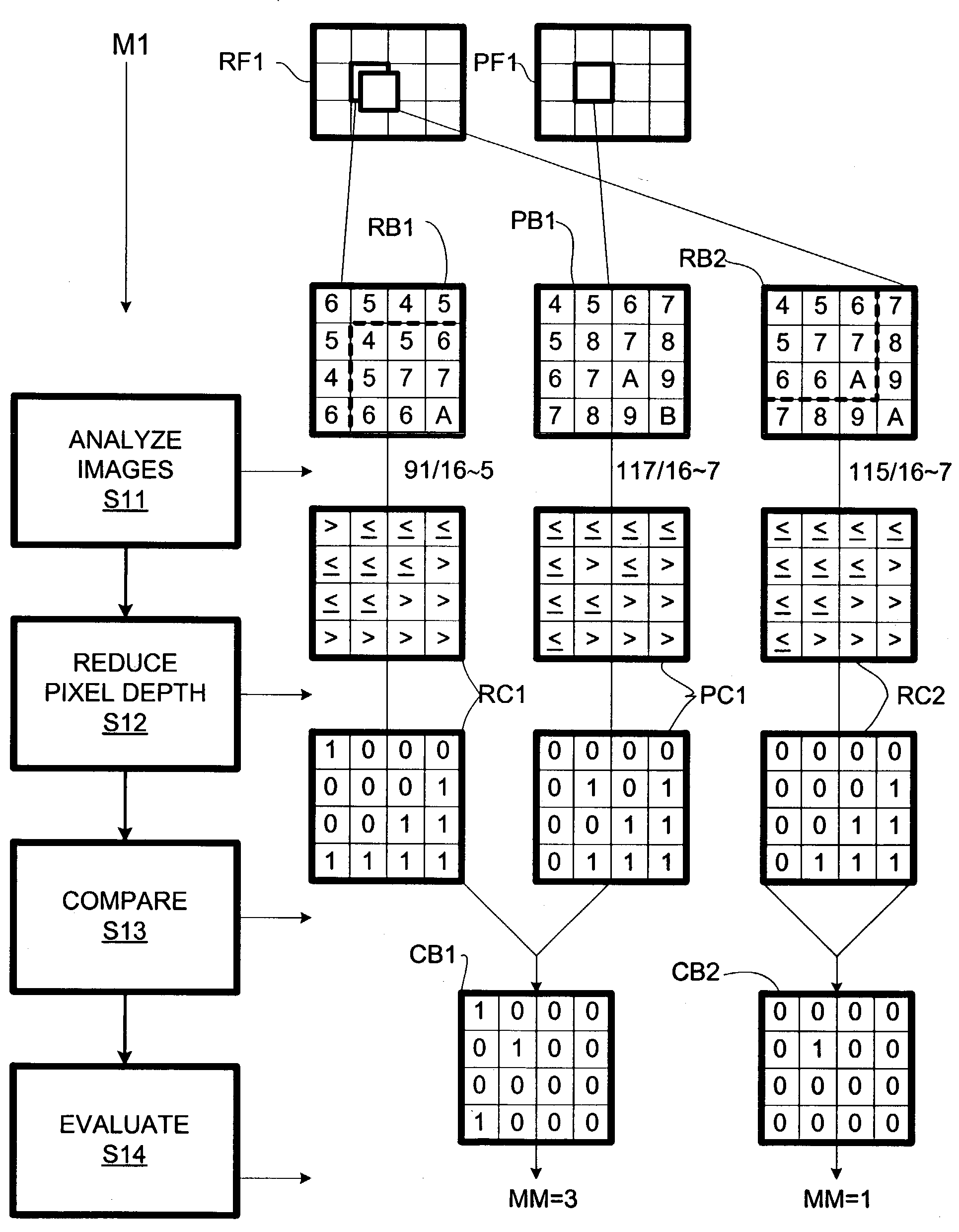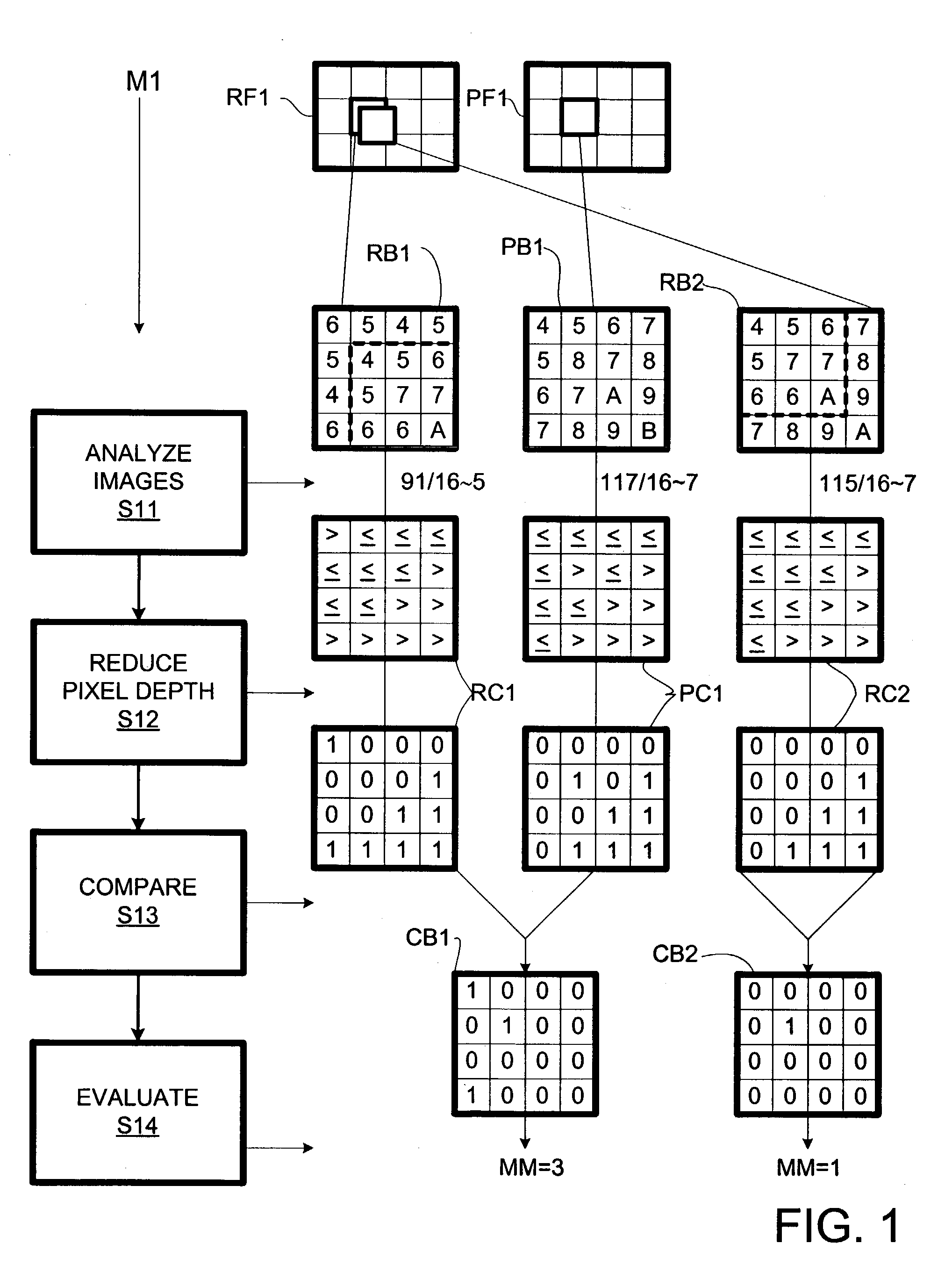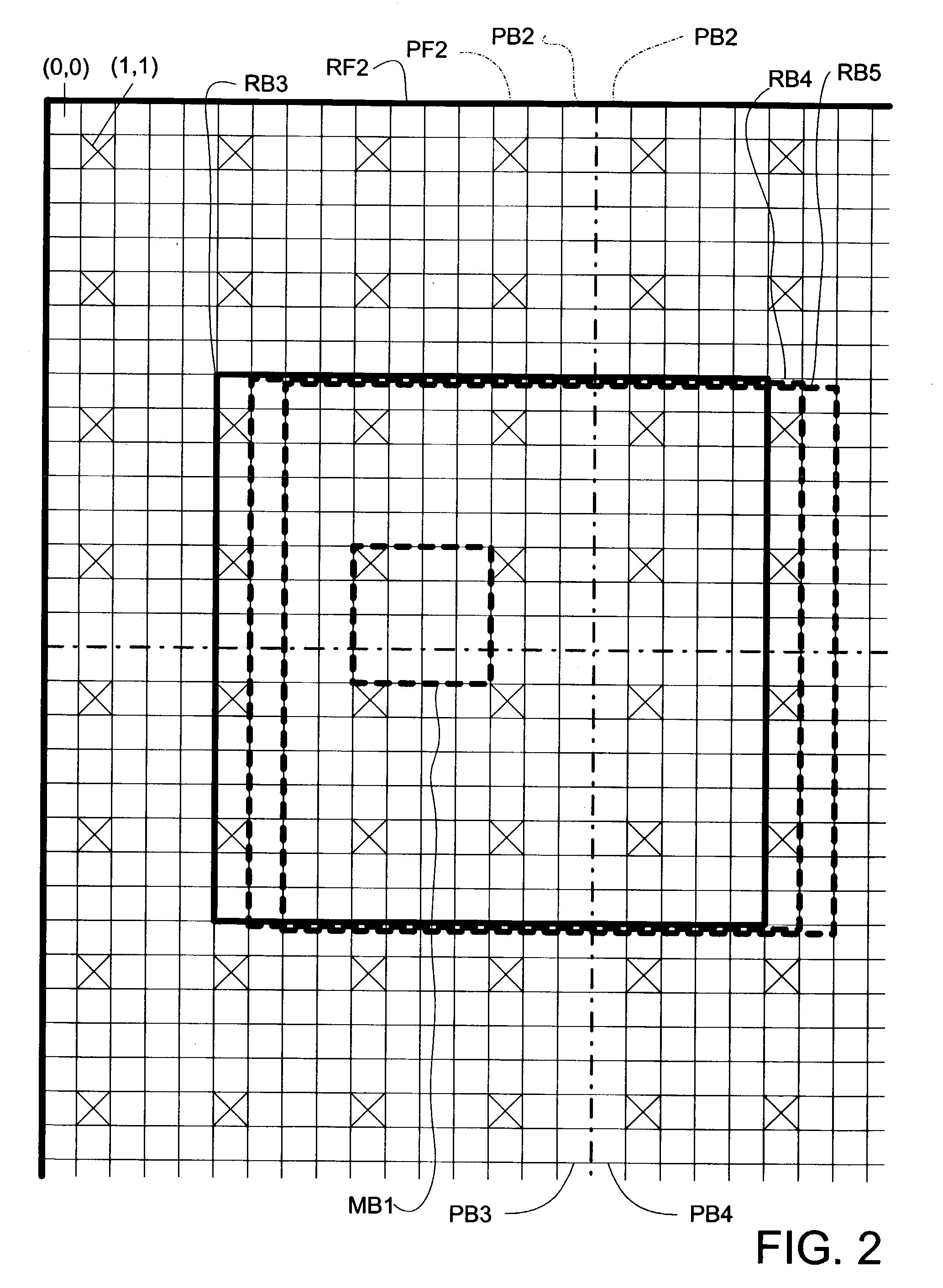Image matching using pixel-depth reduction before image comparison
a technology of image matching and depth reduction, applied in the field of digital image processing, can solve the problems of large amount of data required for storage and bandwidth, large redundancy in video data, and inability to identify unchanged pixel positions in many situations, so as to reduce the amount of data, reduce the latency of operations, and simplify the effect of implementation
- Summary
- Abstract
- Description
- Claims
- Application Information
AI Technical Summary
Benefits of technology
Problems solved by technology
Method used
Image
Examples
Embodiment Construction
[0023]An image-block matching method M1 is shown in FIG. 1 as applied to 4-bit-per pixel images using 4×4-pixel blocks. In this case, method M1 evaluates matches between a block PB1 of a predicted video frame PF1 with a block RB1 of a video reference frame RF1 and with a block RB2, also of reference frame RF1. Each frame is a 16×12 pixel array, with each pixel having a 4-bit luminance value associated with it. Predicted frame PF1 is divided into twelve mutually exclusive 4×4-pixel blocks, including block PB1. In the course of motion estimation, block PB1 is being compared with the 117 4×4-pixel blocks (many pairs of which overlap) of reference frame RF1, including blocks RB1 and RB2. The foregoing dimensions and pixel depths are selected to simplify the illustration and explanation of the invention. In most applications, the frames, blocks, and pixel depths are greater.
[0024]At step S11, the blocks are analyzed to determine a way to reduce their pixel depths while preserving pattern...
PUM
 Login to View More
Login to View More Abstract
Description
Claims
Application Information
 Login to View More
Login to View More - Generate Ideas
- Intellectual Property
- Life Sciences
- Materials
- Tech Scout
- Unparalleled Data Quality
- Higher Quality Content
- 60% Fewer Hallucinations
Browse by: Latest US Patents, China's latest patents, Technical Efficacy Thesaurus, Application Domain, Technology Topic, Popular Technical Reports.
© 2025 PatSnap. All rights reserved.Legal|Privacy policy|Modern Slavery Act Transparency Statement|Sitemap|About US| Contact US: help@patsnap.com



